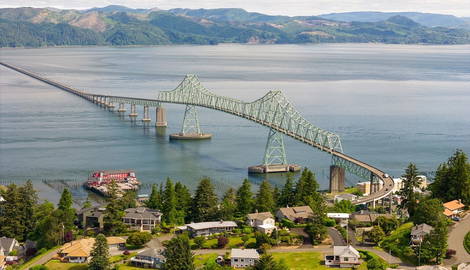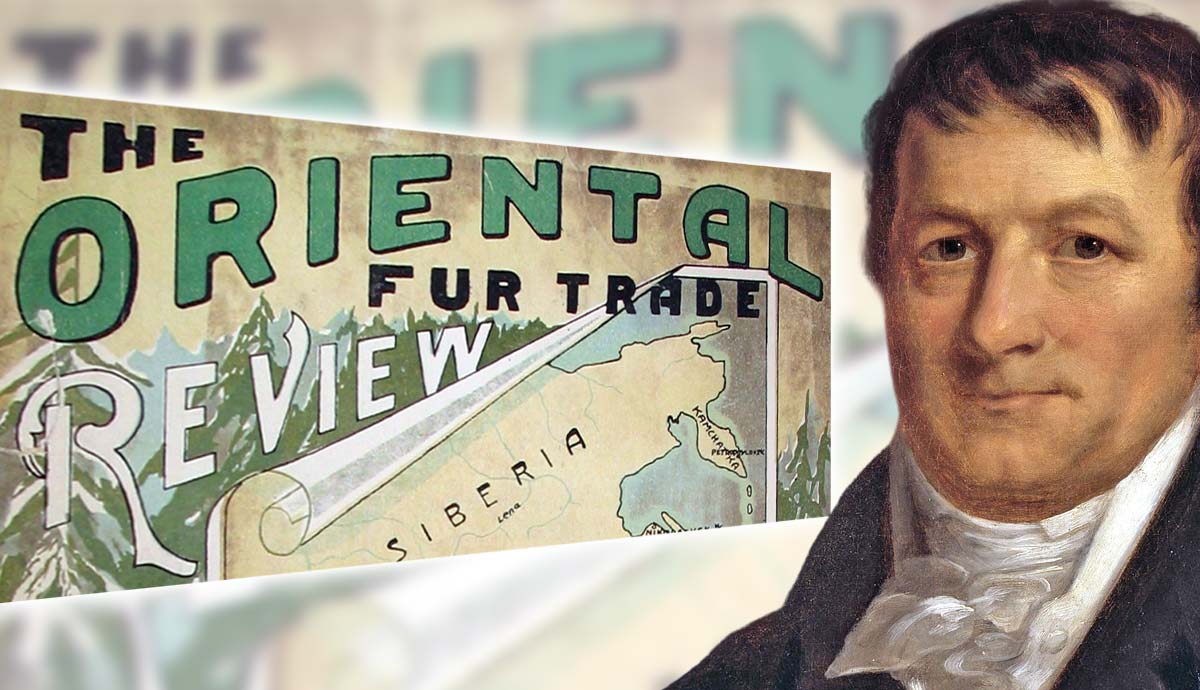
Oregon, a gem of the Pacific Northwest, is best known for its breathtaking coastline, dense forests, and iconic landmarks such as Crater Lake, the deepest lake in the United States. Visitors flock to experience the Columbia River Gorge, home to 90 waterfalls, and Mount Hood, a year-round skiing destination. The Beaver State’s tourism industry has rebounded robustly, with travel spending reaching $14 billion in 2023, a 0.6% increase over the previous year. Oregon’s history is equally compelling, from its critical role in the Oregon Trail migration to the establishment of thriving trade hubs in the 19th century. Its historic towns, including the gold rush hubs and communal settlements, provide a living record of these transformative eras. If you’re a history lover and want to explore these stories firsthand, these ten historic towns in Oregon should be on your bucket list.
1. Jacksonville

Jacksonville, Oregon, founded in 1852 following a gold discovery at Rich Gulch, quickly transformed from a mining camp into a bustling town. By 1853, it became the county seat of Jackson County and a central hub for commerce and government in Southern Oregon. However, the town’s growth slowed after the railroad bypassed it in 1884, leading to a decline in prominence. This downturn inadvertently preserved its 19th-century architecture, which earned Jacksonville a National Historic Landmark designation in 1966.
Today, you can see over 100 preserved structures, including the Beekman Bank, established in 1863, and the 1880s Jackson County Courthouse. The town also hosts the Britt Music & Arts Festival, held in the former estate of photographer Peter Britt.
2. Astoria

This historic town in Oregon was established in 1811 by John Jacob Astor’s Pacific Fur Company. It holds the distinction of being the oldest American settlement west of the Rocky Mountains, which is home to iconic historic small towns. Strategically located at the confluence of the Columbia River and the Pacific Ocean, Astoria played a pivotal role in the fur trade and later emerged as a significant port city.
When you’re there, make sure to learn about Astoria’s rich maritime heritage at the Columbia River Maritime Museum, which offers exhibits on shipwrecks, fishing, and navigation. The Flavel House Museum, an elegant Queen Anne-style mansion built in 1885, provides a glimpse into Victorian-era life. Additionally, the Astoria Column, standing 600 feet above sea level, offers panoramic views of the city and surrounding landscapes. The town is famous for its well-preserved historic sites and vibrant downtown, featuring restored 1920s architecture.
3. Pendleton

Established in 1868 and incorporated in 1880, Pendleton is a town rich in Western heritage. Named after politician George H. Pendleton, it became a vital hub for agriculture and trade in the late 19th century. The arrival of the railroad in 1889 further spurred its growth, which solidified its status as a key economic center in northeastern Oregon.
Pendleton is renowned for the annual Pendleton Round-Up, a rodeo event inaugurated in 1910 that celebrates the region’s cowboy culture and traditions. See the Pendleton Woolen Mills, established in 1909, where you will witness the craftsmanship of iconic woolen products. The Tamástslikt Cultural Institute offers insights into the history and culture of the Cayuse, Umatilla, and Walla Walla tribes. Additionally, the Pendleton Underground Tours provide a glimpse into the city’s past that showcase historic tunnels and spaces beneath the streets.
4. Baker City

Baker City, founded in 1865 and incorporated in 1874, emerged as a pivotal center during the gold rush era. Named after U.S. Senator Edward Dickinson Baker, it swiftly became a commercial hub, especially after the arrival of the Oregon Short Line Railroad in 1884. By 1900, Baker City was the largest settlement between Salt Lake City and Portland, which earned it the moniker “Queen City of the Inland Empire.”
When visiting, make sure to explore the Baker Historic District, which encompasses over 130 properties reflecting late 19th and early 20th-century architecture. A standout landmark is the Geiser Grand Hotel, established in 1889, renowned for its Victorian elegance. The Baker Heritage Museum, housed in the historic 1920 Natatorium, offers exhibits on local industries, Native American artifacts, and the region’s Chinese heritage. Additionally, the National Historic Oregon Trail Interpretive Center provides insights into the pioneer journey, with preserved wagon ruts nearby.
5. Silverton

Situated along Silver Creek, Silverton became a prominent trading and banking center in Western Oregon by the late 19th century. It was established in 1854, and it’s not only rich in history but also in natural beauty.
When you’re in Silverton, you’ll have the chance to explore the Gordon House, designed by renowned architect Frank Lloyd Wright, which is the only Wright-designed building in Oregon open to the public. The Gallon House Bridge, built in 1916, is one of Oregon’s oldest covered bridges and reflects the region’s early 20th-century engineering. This is another must-see. Additionally, the Silverton Country Historical Society Museum offers exhibits on local history, including artifacts from the city’s early days.
Silverton is also known as the “Gateway to Silver Falls” due to its proximity to Silver Falls State Park, which features stunning waterfalls and hiking trails. The city’s historic downtown is adorned with murals depicting its past, which provides a picturesque setting for visitors.
6. Brownsville

This historic Oregon town that was established in 1846 is nestled in the Willamette Valley. Initially known as “Calapooya” after the indigenous Kalapuya people, it was later renamed in honor of Hugh L. Brown, who, along with James Blakely, opened the first store in the area.
The town gained prominence in the mid-19th century as a vital stop along the east side Territorial Road, especially with the operation of Kirk’s Ferry across the Calapooia River. In 1851, Brownsville briefly served as the county seat of Linn County.
When you visit Brownsville, you’ll be able to see the Linn County Historical Museum, housed in the original railroad depot, and six Southern Pacific railroad cars. The museum showcases artifacts from pioneer life, including an authentic covered wagon used on the Oregon Trail.
Another notable site is the Moyer House, an 1881 Italianate-style home featuring intricate stenciling and murals reflecting the town’s affluent past.
Brownsville’s picturesque Main Street, lined with preserved 19th-century buildings, served as the filming location for the 1986 movie Stand By Me, adding a touch of cinematic history to its charm.
7. Cottage Grove

Cottage Grove, established in the mid-19th century, is renowned for its rich history and collection of covered bridges. Known as the “Covered Bridge Capital of Oregon,” the city boasts six historic covered bridges, including the Chambers Railroad Bridge, the only remaining covered railroad bridge west of the Mississippi River.
The Downtown Cottage Grove Historic District, listed on the National Register of Historic Places in 1992, features early 20th-century architecture, with many buildings designed by architect John Hunzicker. The district’s cohesive aesthetic reflects the city’s development during that era.
Also, it’s worth visiting the Cottage Grove Museum, housed in a former church built in 1897, which showcases local artifacts and history.
8. Troutdale

This beautiful historic town was founded in the 1850s near the confluence of the Sandy and Columbia Rivers. It has a rich history shaped by its strategic location. Initially known as Sandy, the town was renamed Troutdale by pioneer John Harlow, who raised trout in ponds on his farm.
Incorporated in 1907, Troutdale became a vital hub with the arrival of the railroad in 1882, facilitating commerce and growth. The construction of the Historic Columbia River Highway in 1916 further enhanced its significance, which made it a gateway to the Columbia River Gorge.
You can explore the city’s heritage through the Troutdale Historical Society’s museums, including the Barn Exhibit Hall, the Fred E. Harlow House, and the Depot Rail Museum, which showcases artifacts and stories from Troutdale’s past.
The city’s historic downtown features art galleries, antique stores, and charming shops, reflecting its early 20th-century architecture.
9. Canyon City

Canyon City was established in June 1862 following a gold discovery at Whiskey Gulch on Canyon Creek. It then quickly became a bustling mining town. At its peak, the population swelled to approximately 10,000, surpassing Portland at the time. In 1864, it was designated the county seat of Grant County, which solidified its regional importance.
You can explore today Canyon City’s rich heritage at the Grant County Historical Museum, which showcases artifacts from the gold rush era, including mining equipment and exhibits on pioneer life. The museum also features unique displays, such as taxidermied calves with rare deformities that reflect the area’s agricultural history.
Strolling through Canyon City reveals well-preserved 19th-century structures that are worth witnessing for history lovers.
10. Aurora

Founded in 1856 by Dr. Wilhelm Keil, Aurora began as a Christian communal society known as the Aurora Colony. Named after Keil’s daughter, the colony attracted over 600 members at its peak, emphasizing shared resources and collective living.
The colony was notable for its skilled artisans, producing high-quality textiles, furniture, and musical instruments. Music played a central role in community life, with the Aurora Colony Band gaining regional acclaim.
After Dr. Keil’s death in 1877, the communal society gradually dissolved, which led to the incorporation of Aurora as a city in 1893.
Today, Aurora’s historic district preserves numerous original colony buildings that allow visitors to learn more about 19th-century communal life. The Old Aurora Colony Museum features artifacts and exhibits detailing the colony’s history and craftsmanship. Aurora is also recognized as one of America’s premier antiquing destinations, with many shops housed in historic structures.










